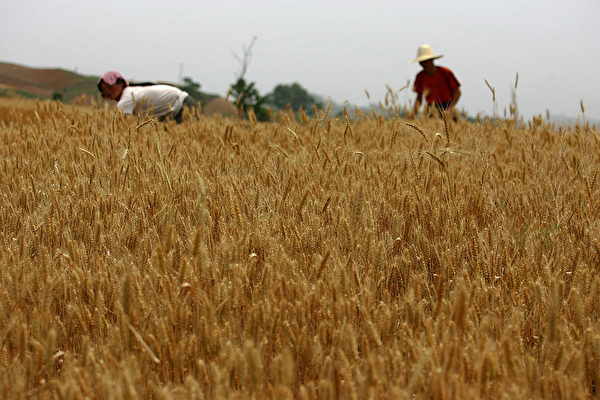After driving northwest from the famous Terracotta Army of Qin Shi Huang for about an hour, a combine harvester in the parched wheat fields of Maqiao Village in Shaanxi Province, China, kicked up clouds of dust. But locals like Zhou Yaping expressed that there is nothing worth celebrating.
According to Reuters, some of Zhou Yaping’s crops still have a hint of green, indicating they are not fully ripe yet. Her family’s two-thirds of an acre of land usually yields 1000 kilograms of wheat, but this year’s harvest is expected to be only half of that.
“I have been growing wheat for over 20 years and have never seen such a severe drought,” said the 50-year-old Zhou Yaping during Reuters’ visit at the end of May.
Parts of the wheat belt in Shaanxi and Henan have been severely affected by hot and dry weather, with the sun baking the soil to cracks, causing the wheat to wither before ripening.
Last month, Shaanxi recorded its highest average temperature since 1961. While official data is still about six weeks away from being released, more than ten farmers in the region and the workers they hired to harvest crops told Reuters that wheat losses have been significant, with yields greatly reduced, some even halved.
Due to the severe drought, some farmers in certain areas of Shaanxi Province have started harvesting wheat a week early.
It is still early to determine whether the drought will lead China to import more wheat, but this is good news for growers in countries like Australia. Traders mentioned that China’s ample wheat stocks and poor demand had restrained import needs.
Rosa Wang from Shanghai’s JCI Agricultural Consultancy told Reuters, “The drought has had a significant impact on wheat production in regions with weak irrigation infrastructure, but overall production losses are not expected to be significant.”
In Zhoukou, Henan, another farmer surnamed Zhang said he harvested 1.65 acres of wheat on May 23, more than a week earlier than usual due to the scorching weather. Mr. Zhang stated over the phone that his yield has dropped by 40%. The significant yield decrease also occurred in 2023 when the wheat suffered from germination and withering due to floods.
“Other than the costs of seeds, harvesting, and cultivation, we hardly make any profits, just breaking even,” said Farmer Zhang.
Though some rain has finally arrived in recent days, bringing some relief to the crops, for farmers awaiting harvest, the rain during harvesting poses challenges during the critical period.

